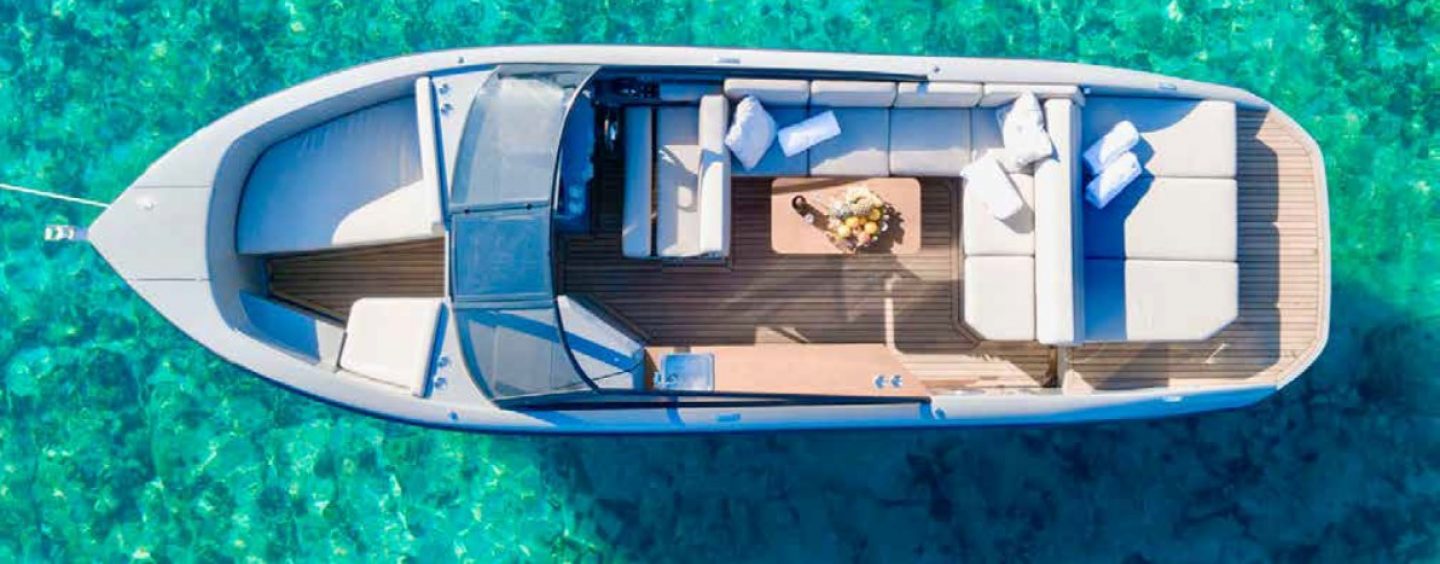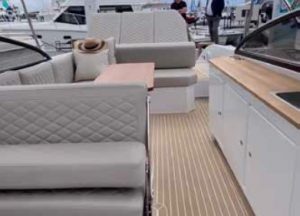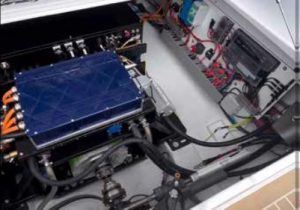By Andrew Bedggood
The all-electric, Danish-designed, RAND 27 bowrider provides an alternative for purchasers who are in the market for a dayboat and, at the same time, wanting an eco-friendly option with a focus on sustainability.
At a length of 8.44 m and a 2.59 m beam, the RAND 27 can comfortably seat up to 12 people and, with a draft of 0.35 m, can visit many lovely sandy beaches.
There is a choice of inboard electric motor/battery combinations: the 170 kW E-drive with a 78 kWh lithium battery bank, or the 265 kW E-drive with 117.5 kWh lithium battery bank from EPTechnologies (Denmark).
With the less powerful option, RAND calculates the top speed to be 30 knots, and that the cruising range (at 8 knots) would be around 64 km. The more powerful of these combinations is estimated to have a top speed of 40 knots and a cruising range (at 8 knots) of about 94 km.
Naturally, the actual range (as with any boat) will depend on a variety of factors including the gross weight of the boat, cleanliness of the hull, condition of the propellers, weather and sea conditions, the speed of travel and, with electric motors, battery capacity and efficiency.
From the Gold Coast, a slow meandering trip to, say, the beaches of South Stradbroke Island, of around 20-30 nm, a couple of hours exploring, sunbathing, swimming, etc followed by a quick trip back to base should be well within the capabilities of the electric motor and its lithium batteries.
With most dayboat journeys being less than about 40 km, skippers of the RAND Supreme 27 should have the confidence that a fully charged battery will be more than sufficient for their needs. Speaking of which, these boats do not come with solar panels for recharging the batteries, however connecting to shore power overnight should give full charge by morning.
By now, the environmental benefits of electric boats are well known – no fumes to trouble passengers, no greenhouse gas emissions, no fuel leaks to harm marine life, and no noise to bother other boat users or make conversation onboard difficult. Owners can enjoy cruising on pristine lakes, winding through urban canals, or just exploring neighbouring beaches and coves with a clear conscience. Not to mention pre-empting future government policies making the operation of petrol/diesel engine vessels more expensive, less desirable, and even restricted in some areas.
Continual development in electric motor technology is producing motors with comparable performance to traditional petrol/diesel motors, and impressive acceleration. There is no need to wait for the motor to warm up and engage the gears, just flick a switch and move the throttle.
Although relatively expensive initially, electric motors also have fewer maintenance issues than traditional motors with their plugs, filters, fluids and seals – and increasingly more costly fuel – and are becoming a more cost-effective alternative.
Of course, factors such as reliability need to be considered – will the batteries take the boat there and back, can I recharge, will the motor perform when needed, and so on. Although with just one moving part the reliability of electric motors could arguably be far superior.
If a motor were to break down, electric or otherwise, there would be little choice but to drop anchor and call for assistance. Some petrol/diesel boats might carry spare fuel, however new generation electric boats have a ‘reserve limit’ which restricts the boat speed to optimum for distance so there should be plenty to get back to base, even if the boat is limited to ‘limp home’ speeds. Far better to take the precaution of ensuring your batteries are fully charged before leaving home, monitoring them throughout the day, and enjoying your day.
Discover the range at www.eyachts.com.au
Published in print August-December 2024






























